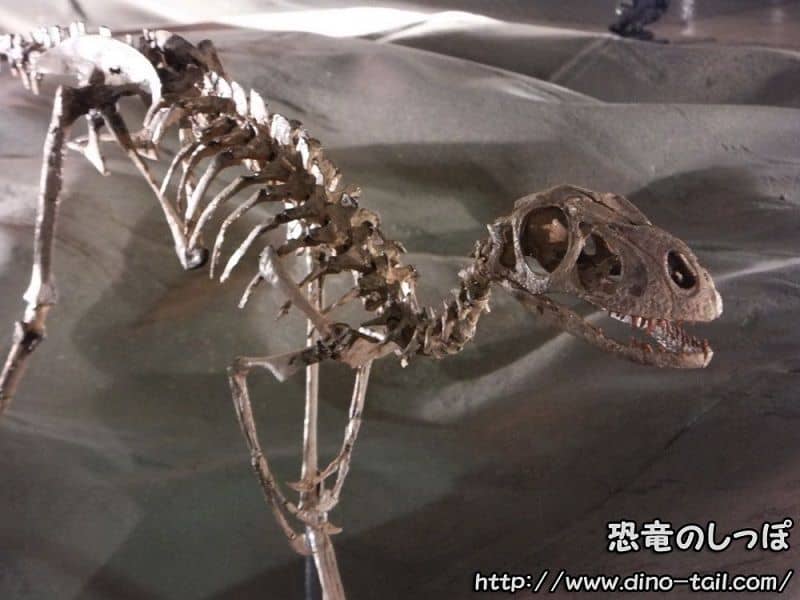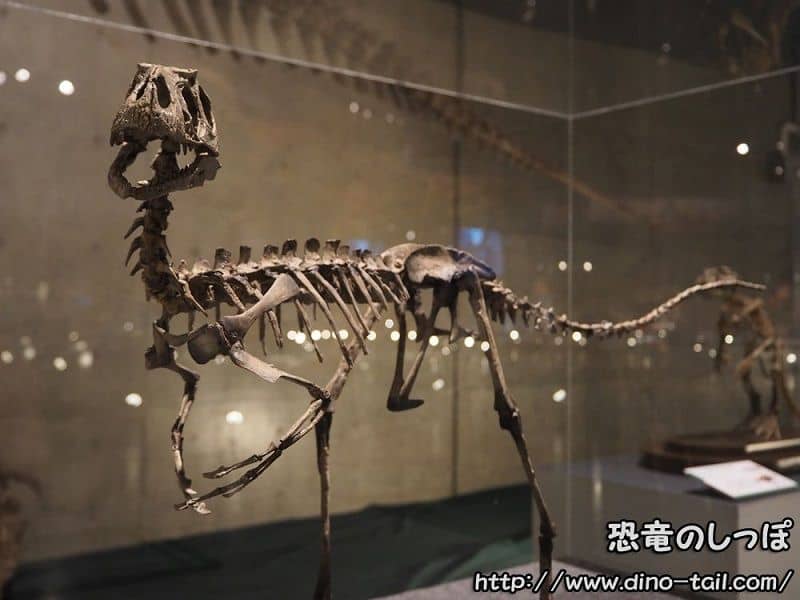About Dilong
| Scientific Name (Genus) | Dilong |
| Meaning of Name | Emperor Dragon |
| Classification | Saurischia, Theropoda (Coelurosauria, Tyrannosauroidea) |
| Total Length | Approx. 1.6 - 2m |
| Diet | Carnivorous |
| Period | Early Cretaceous (approx. 126 million years ago) |
| Species | Dilong paradoxus |
| Year of Paper Publication | 2004 |
| Genus Name Publication | Xu, X., Norell, M. A., Kuang, X., Wang, X., Zhao, Q., Jia, C. (2004). Basal tyrannosauroids from China and evidence for protofeathers in tyrannosauroids. Nature, 431. |
Characteristics
Dilong, described in a 2004 paper, was a feathered dinosaur. It was the first tyrannosauroid found with evidence of feathers.
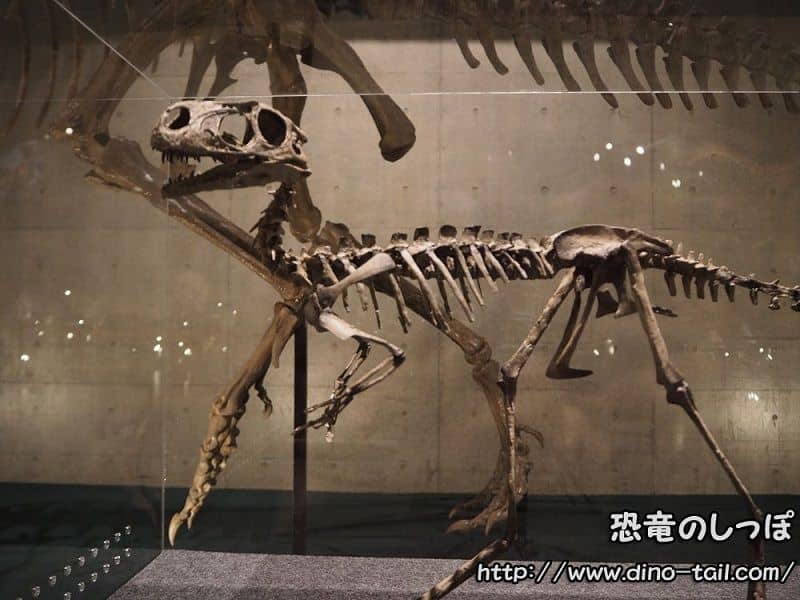
The only species of Dilong was named paradoxus, which is Latin for "surprising, beyond common sense, paradoxical." This name comes from the surprise that Dilong, classified in the Tyrannosauroidea, was small and had feathers.
The genus name Dilong is sometimes pronounced "Dillon."
Dilong was a feathered dinosaur that lived in Liaoning Province, China, during the Early Cretaceous (about 126 million years ago). It was found in the famous Jehol Group.
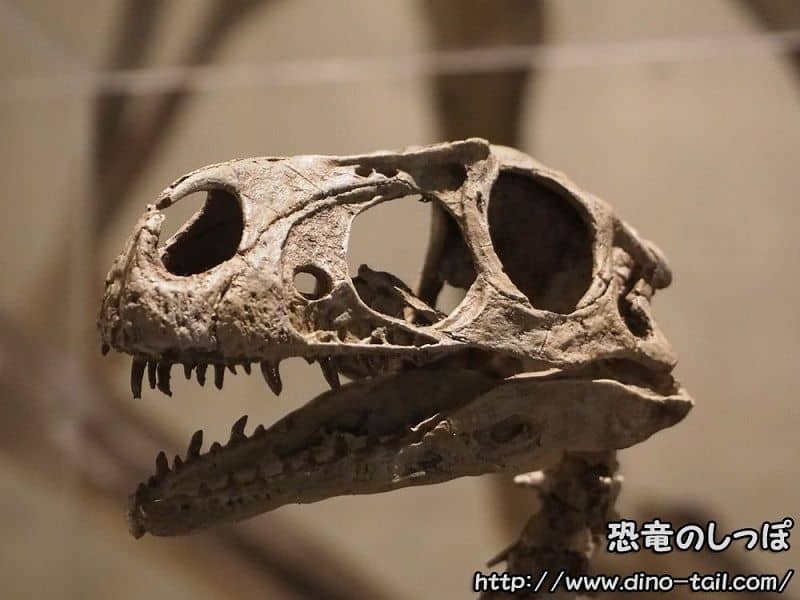
A nearly complete skeleton of a young individual has been found, with a total length of about 1.6m. Based on skeletal studies, it is estimated that adults would have reached about 2m.
Traces of feathers were preserved on the jaw and tail. Unlike those of modern birds, these were fibrous feathers without a central shaft. They were likely for insulation rather than flight. It is thought that its entire body was covered in feathers.
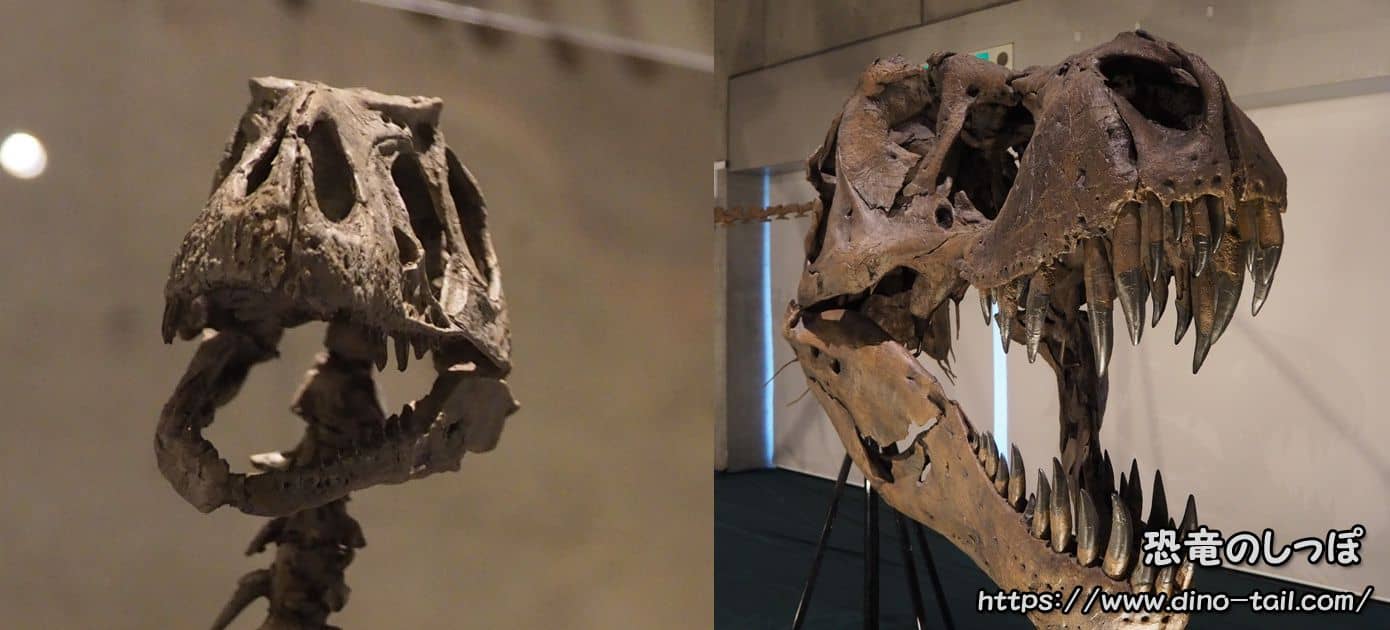
Left: Dilong, Right: Tyrannosaurus
The morphology of its skull and teeth clearly shows features of the Tyrannosauroidea, but it also differs from the more advanced Tyrannosauridae, having large forelimbs with three fingers.
"Primitive Feathers" That Overturn the Image of Tyrannosauroids
The most shocking aspect of Dilong's discovery was the clear traces of "protofeathers" preserved with its fossil. Protofeathers are simple, hair-like filaments that lack the complex structure of bird feathers and are thought to have been used mainly for insulation.
This discovery strongly suggested that the ancestors of the entire tyrannosauroid group, including the later, giant Tyrannosaurus rex, were originally covered in feathers. Dilong may have needed feathers for insulation due to its small body size. It is thought that later, larger tyrannosauroids lost their feathers as their large bodies made it easier to retain heat.
Were Baby Tyrannosaurs Fluffy?
The discovery of Dilong has strengthened the theory that juvenile Tyrannosaurus, like baby birds, may have been covered in downy feathers for warmth. It paints a surprisingly different picture of the king of the dinosaurs.
An Agile Hunter
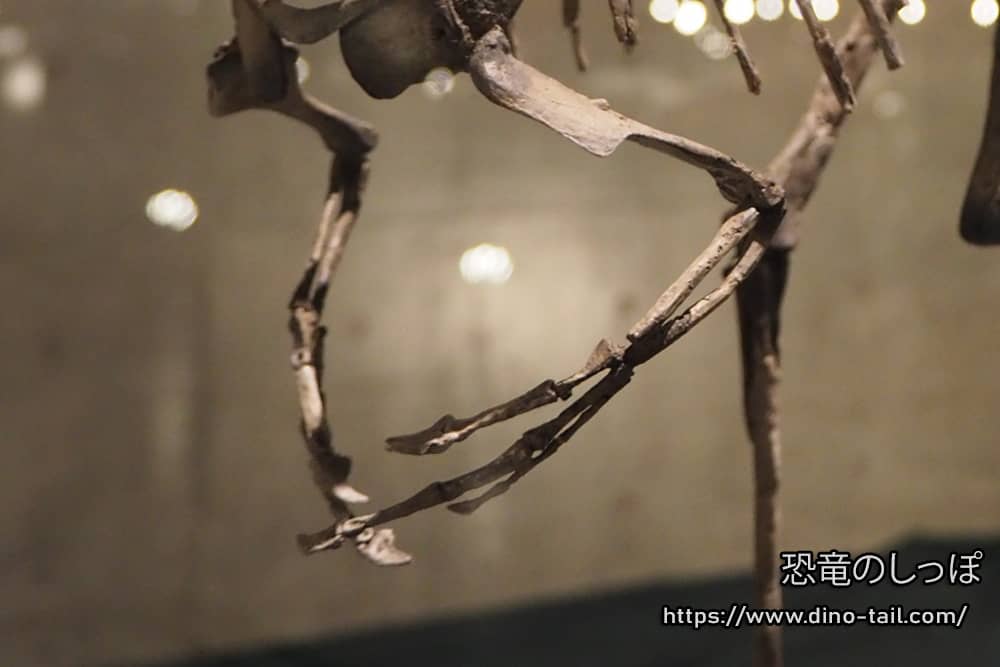
Unlike later tyrannosaurids, Dilong had relatively long and large forelimbs (arms). Its hands had three fingers, each equipped with a sharp claw. These arms are thought to have been used as powerful weapons for capturing and tearing apart prey.
Furthermore, Dilong had a lightweight body and long hind limbs, suggesting it could run very fast. It was likely an agile hunter that pursued small herbivorous dinosaurs, mammals, and lizards in forests and open areas. This paints a picture of its ecology as a small predator, different from the giant Tyrannosaurus.
Dilong Stamp & Fossil Gallery
